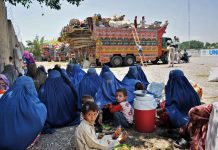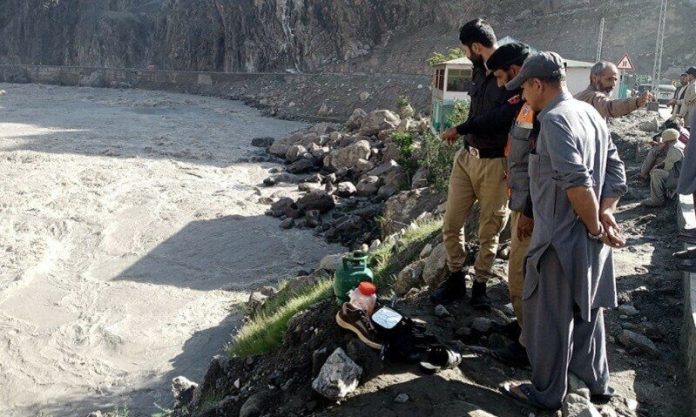Pakistan continues to grapple with severe infrastructural underdevelopment, a direct consequence of decades of administrative neglect and mismanagement. This critical issue not only hampers the nation’s economic growth but also significantly impacts the quality of life for millions of its citizens.
Nowhere is this more evident than in regions like Pakistan-occupied Gilgit-Baltistan (PoGB) and the Neelum Valley, where local communities struggle daily with inadequate basic amenities and crumbling infrastructure.
The Thorsay Bilamik Valley in PoGB serves as a stark example of Pakistan’s failure to develop and maintain crucial infrastructure. Despite its potential as a tourist destination, the valley remains largely inaccessible and underdeveloped. Local residents face a myriad of challenges, including the absence of mobile network coverage, dilapidated road conditions, insufficient healthcare facilities, and a severe lack of educational institutions. These issues are not isolated incidents but rather symptomatic of a broader pattern of neglect that plagues much of Pakistan’s rural and remote areas.
Despite raising these concerns, the administration remains silent and unresponsive.” This sentiment echoes throughout the region, where promises of development and progress remain unfulfilled, leaving communities to fend for themselves in increasingly challenging conditions. Education, a cornerstone of societal progress, is another sector that bears the brunt of Pakistan’s infrastructural neglect. In the Thorsay Bilamik Valley, the presence of only one small middle school for a large student population underscores the government’s failure to prioritize education. This inadequacy forces many students to leave their homes and families in search of better educational opportunities, disrupting family structures and exacerbating the brain drain that plagues many of Pakistan’s rural areas.
Healthcare infrastructure, or the lack thereof, presents another critical challenge. The absence of proper medical facilities in remote areas like the Thorsay Bilamik Valley puts lives at risk, particularly for women and children. Reports of women giving birth during perilous journeys to distant hospitals highlight the dire consequences of neglecting healthcare infrastructure. This situation is not only a violation of basic human rights but also a damning indictment of Pakistan’s inability to provide essential services to its citizens. The deteriorating road network across Pakistan, particularly in regions like PoGB, further exemplifies the country’s infrastructure crisis. Pilgrims traveling to religious sites near the mountain peaks of PoGB face treacherous journeys on poorly constructed roads, often spending additional hours navigating dangerous terrain. Such experiences not only deter tourism but also hinder economic activities and emergency services in these regions.
Perhaps most telling of Pakistan’s administrative failures is the persistent gap between promises and action. Contracts for road construction in PoGB were reportedly awarded years ago, yet no progress has been made. This pattern of unfulfilled commitments and squandered resources is emblematic of the corruption and inefficiency that plague Pakistan’s governance structures.The result is a landscape dotted with half-finished projects and deteriorating infrastructure, serving as monuments to administrative incompetence.
The situation in the Neelum Valley provides another troubling example of Pakistan’s mismanagement and disregard for local communities. The controversial allocation of 32 canals at Sargan Nuri Top to the Green Tourism Company has sparked outrage among local residents, who view this move as an encroachment on their historic grazing lands and a threat to their livelihoods. The decision by the Neelum Forest Department to grant this prime site to a private company echoes colonial-era land grabs, raising concerns about the government’s priorities and its willingness to sacrifice local interests for corporate gains.
This incident in the Neelum Valley is not isolated but part of a broader pattern of marginalization and neglect that characterizes Pakistan’s approach to regional development. By prioritizing corporate interests over the needs and rights of local communities, the government undermines social cohesion and exacerbates existing inequalities. The comparison drawn by locals between the Green Tourism Company’s land acquisition and the East India Company’s historical actions is a damning indictment of Pakistan’s governance, suggesting a continuity of exploitative practices that prioritize profit over people. Pakistan’s failure to address these infrastructural challenges has far-reaching consequences. Beyond the immediate impact on local communities, the country’s neglect of basic infrastructure undermines its competitiveness in the global economy. While neighboring countries invest heavily in modernizing their infrastructure to attract foreign investment and boost economic growth, Pakistan lags behind, trapped in a cycle of underdevelopment and missed opportunities.
The root causes of Pakistan’s infrastructural crisis are complex, ranging from financial constraints and misallocation of resources to corruption and lack of political will. However, the primary responsibility lies with successive governments that have failed to implement effective long-term development strategies. The focus on short-term political gains over sustainable development has left Pakistan ill-equipped to meet the needs of its growing population and compete in the modern global economy. As Pakistan struggles with these internal challenges, its regional influence and standing on the international stage continue to diminish. The country’s inability to provide basic services and infrastructure to its citizens not only undermines its credibility as a regional power but also raises questions about its capacity for effective governance and development.
Pakistan’s severe infrastructural underdevelopment is a crisis of its own making, rooted in decades of administrative neglect and mismanagement. From the remote valleys of Gilgit-Baltistan to the contested lands of the Neelum Valley, the stories of crumbling roads, absent healthcare facilities, and inadequate educational institutions paint a picture of a nation failing its citizens. As Pakistan continues to grapple with these challenges, the need for comprehensive reform and a renewed commitment to sustainable development has never been more urgent. Without significant changes in governance, resource allocation, and development priorities, Pakistan risks falling further behind in a rapidly advancing world, leaving its potential unfulfilled and its people underserved.









































